The Neptune series is a 1/2-inch format planetary camera series for the top player. It is larger than 1/3-inch and has a higher resolution, and is more suitable for astronomy enthusiasts.
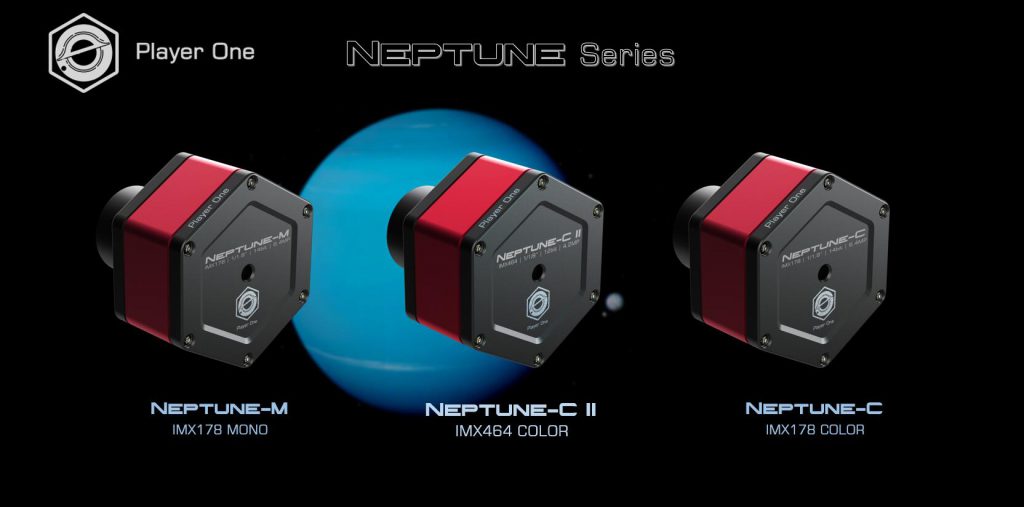
The main hit of the Neptune series is Neptune-C II, yes, you read it right. We directly released the second-generation Neptune model on the grounds that the plan could not keep up with the changes.
Neptune-C II camera uses Sony’s latest IMX464 chip, which is better than IMX462. Neptune-C II is also the world’s first planetary camera with IMX464 chip.
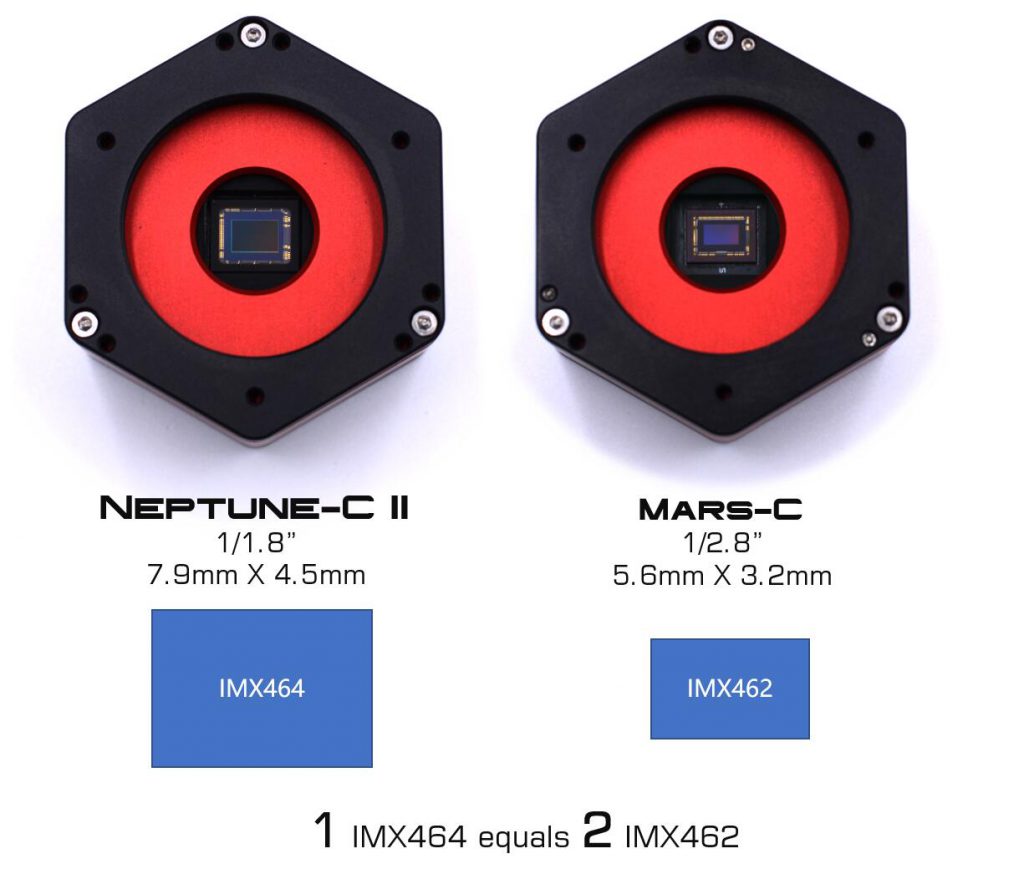
0.7e ultra-low read noise
Compared with the IMX178 of the same frame, the read noise of Neptune-C II can be as low as 0.7e, and the noise is reduced by about 47%, which is as strong as IMX462!
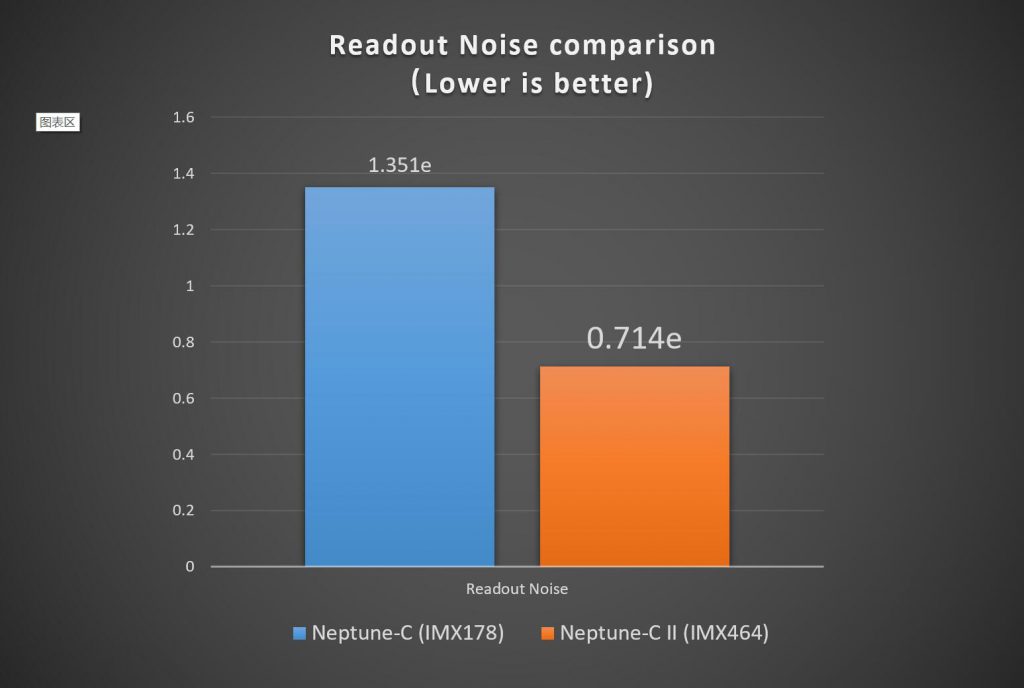
Sensitivity increase
Compared with another 1/1.8 inch chip IMX178, we find that the IMX464 pixel is larger than the IMX178 at 2.4um, reaching 2.9um.
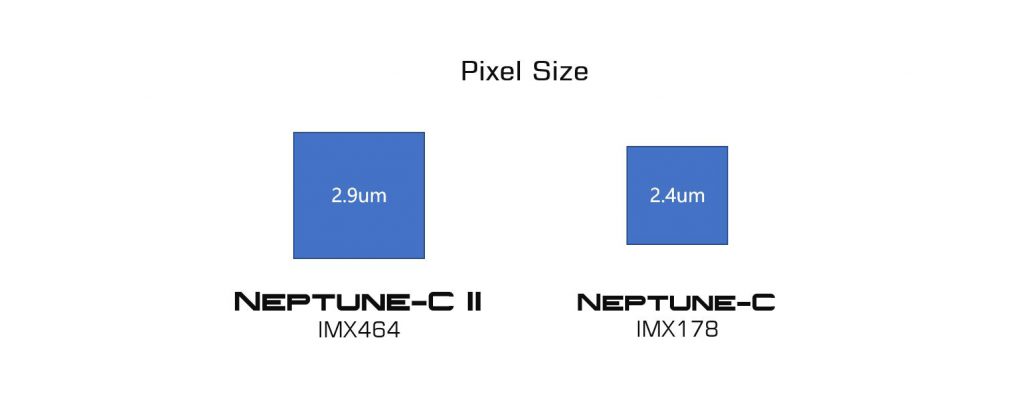
When used on the same telescope, although the quantum efficiency is not much different, the 2.9um pixel has 46% larger photosensitive area than the 2.4um pixel, which can greatly increase the single pixel to obtain more photons, which means Sensitivity has also been greatly improved.
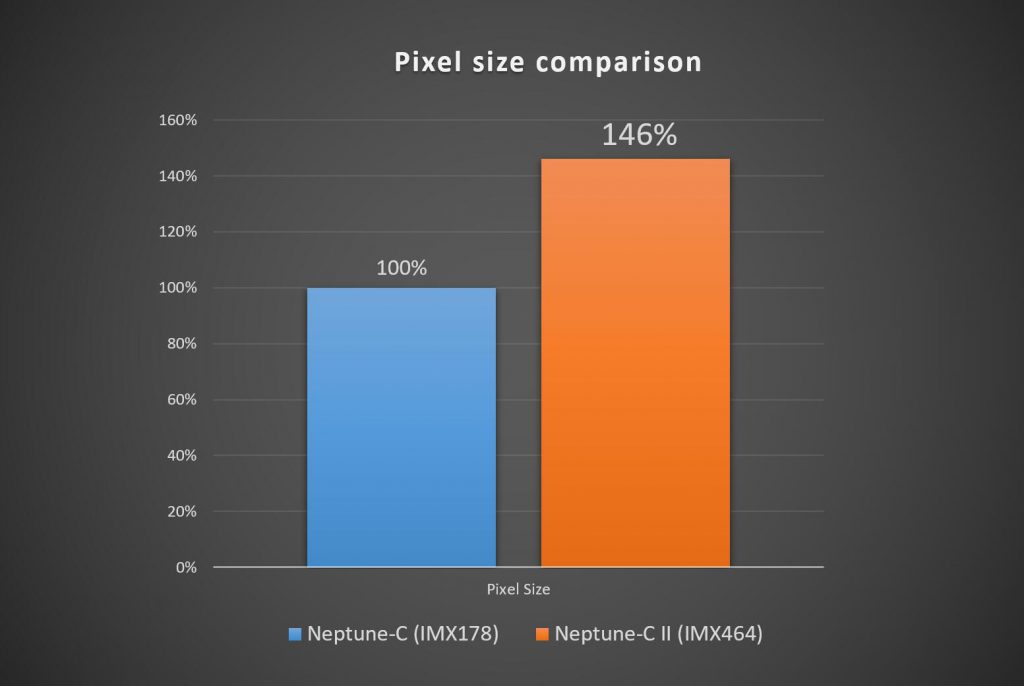
Near infrared super light sensitivity
Not only that, IMX464 also has ultra-sensitive infrared sensitivity characteristics, suitable for playing infrared photography, whether it is matched with IR685, IR850 or CH4 filters, it will give you a new visual experience.
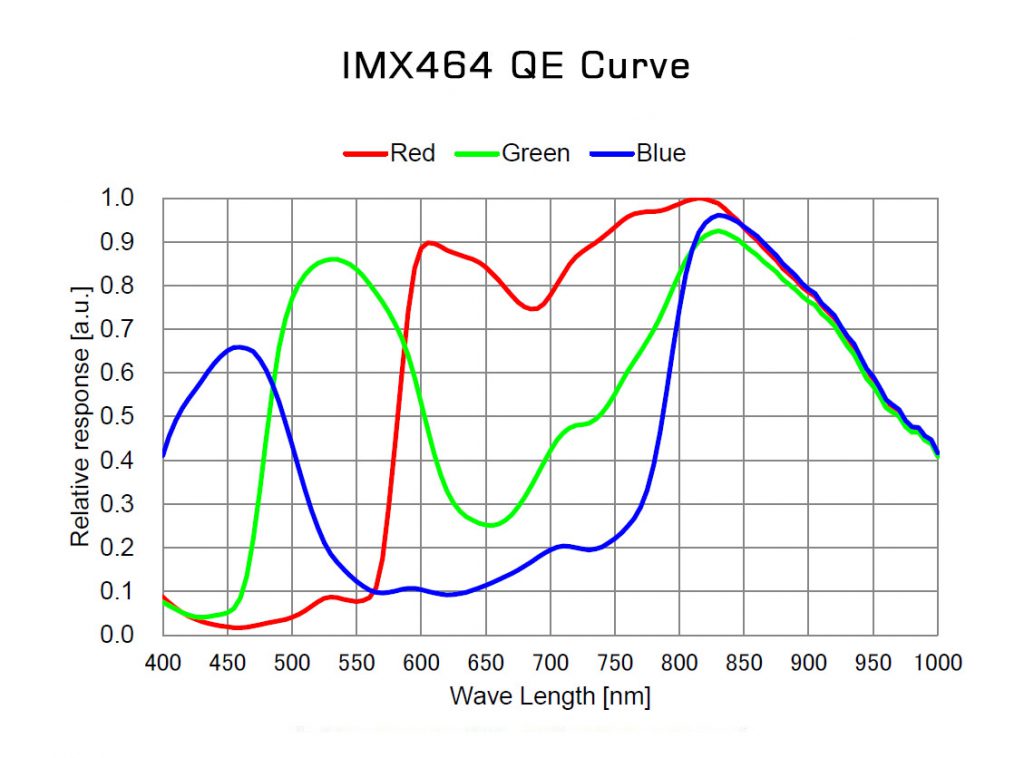
Ultra high frame rate
Neptune-C II can reach 93FPS at full resolution, which is 55% higher than the 60FPS of the IMX178 chip of the same size, making it more efficient to shoot planets.

Features:
The naming of Player One Astronomy cameras is unique. For example, we name the planetary cameras after planets (They are Mercury, Venus, Mars, Jupiter, Saturn, Uranus and Neptune, Earth is not included). The size of each planet to a certain extent, represents the size of camera sensors. We will name Saturn with a 1-inch sensor camera, and for Neptune, we will named it with a 1/1.8 inch senor camera. All names will be engraved on the housing of the cameras.
Drivers and softwares download: http://player-one-astronomy.com/service/software/
Manuals download: http://player-one-astronomy.com/service/manuals/
Cutting-edge Design
The planetary cameras developed by Player One Astronomy uses a scientific and technological regular hexagon to construct the main body line, supplemented by round chamfers to achieve both rigidity and flexibility. The positive red, which is like a summer fire, is matched with the low-key and steady black, and the super-fine frosting process on the entire surface makes the camera look luxurious and cool, highlighting the style of high-end players, can’t take my eyes off 😀

Sensor Tilt Plate
When taking solar photograph with prominence telescope, the Newton ring is annoying. Smoother solar image without Newton ring could be taken by adjusting the focal plate. Besides, when you use a planetary camera for deep-sky lucky imaging, if you find the surrounding stars are not perfect, you can adjust the sensor tilt plate to obtain a flatter image field. get a much smaller field curvature of the telescope.
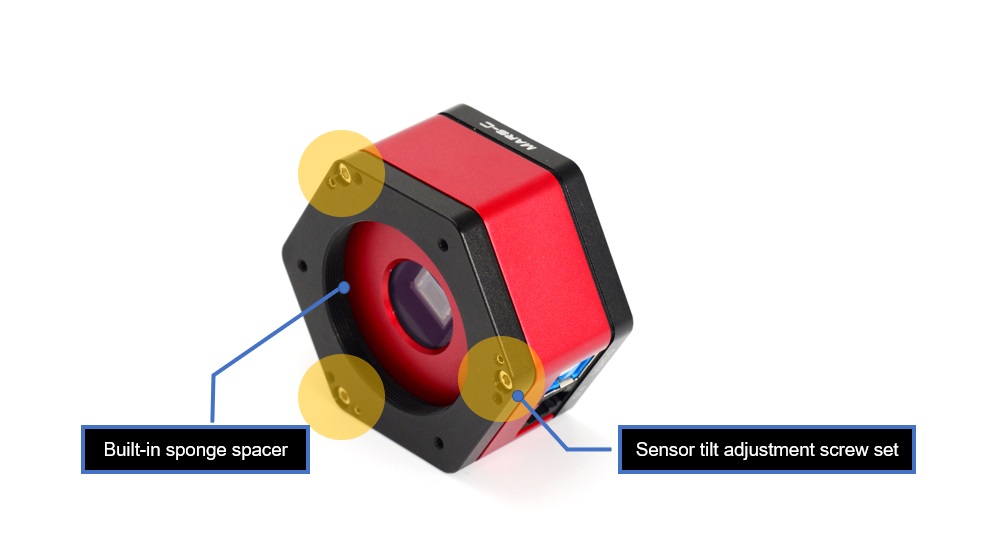
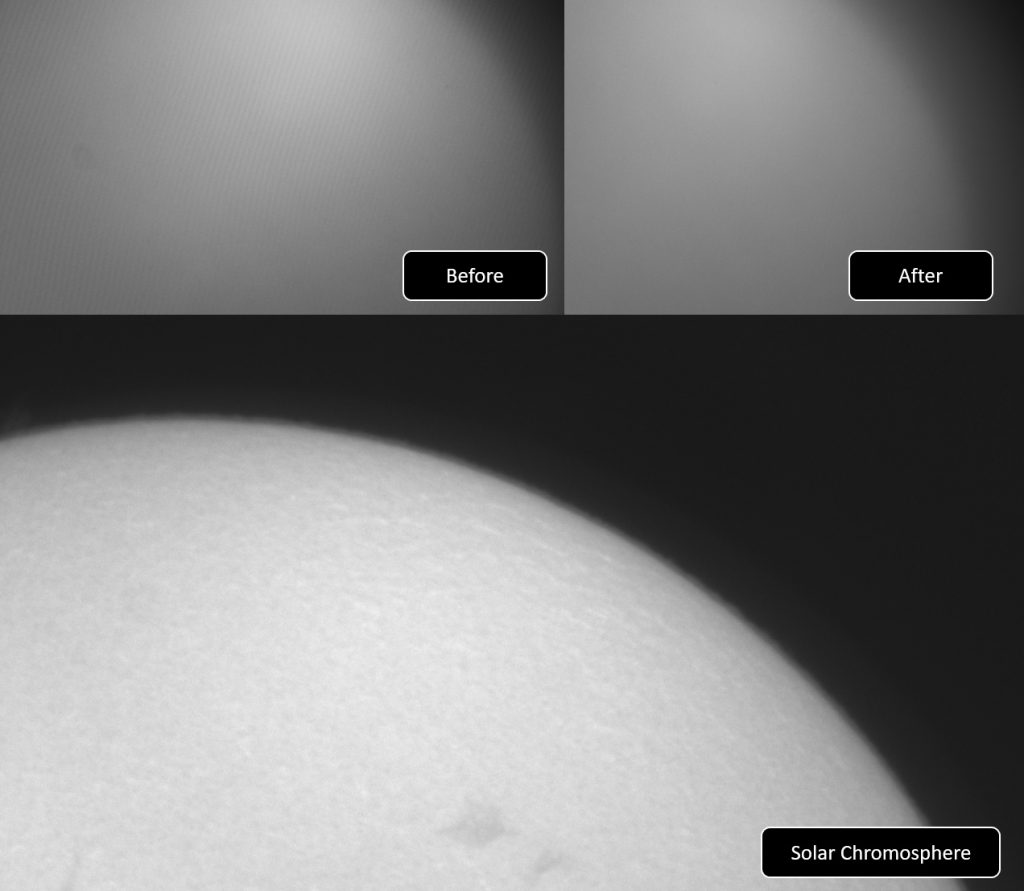
The built-in high-density sponge shading pad can block the light from the side slits without any side leakage.
256M DDR3 Cache
Player One Astronomy cameras are the first one who adpots the DDR3 cache in all planetary cameras in the world! It helps stabilize and secure data transmission, it effectively avoids frame dropping and greatly reduces readnoise.
With the DDR3 cache, our camera do not have high demands on computing needs any longer, it will still has excellent performance even if it is connected to a USB 2.0 port.

DPS technology
The planetary cameras from Player One Astronomy have DPS (Dead Pixel Suppression) technology, dead pixels (including both hot pixels and cold pixels) of the image are swept away. DPS function is turned on during your whole imaging session, no need to worry about it !
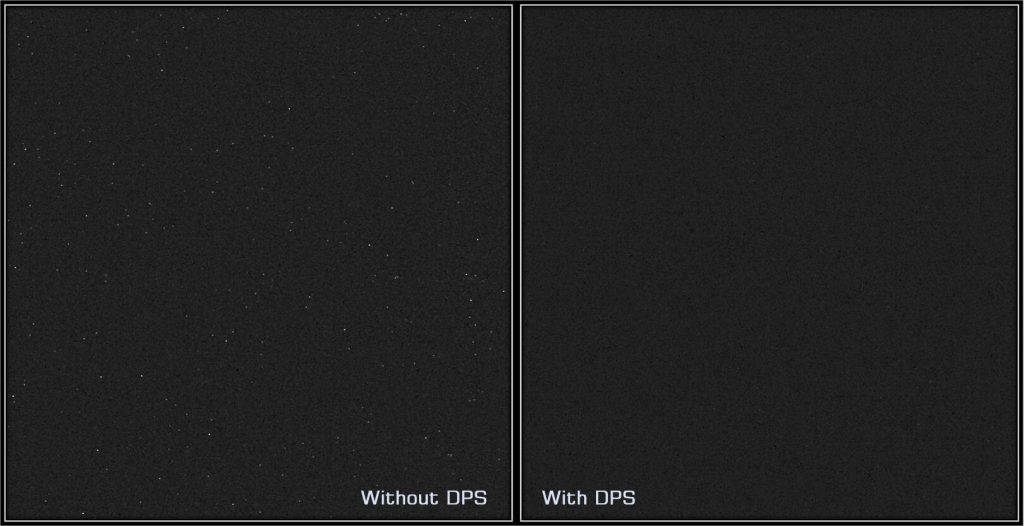
Overvoltage and overcurrent protection mechanism
Player One cameras produced by the number one player ensures the safety of your camera and other equipment through overvoltage and overcurrent protection mechanisms.
Data Port
When the camera is connected to the USB3.0 interface and full-resolution preview is used, it can reach 93 FPS in RAW8 mode (10bit ADC). When recording images, since the actual writing speed will be affected by the writing speed of the hard disk itself, when the hard disk writing speed is slow, the recording may not reach the theoretical speed. It is recommended that you use a high-quality solid state drive to record data to give full play to the performance of the camera.
Use the ST4 guide cable to connect the camera and the AUTO GUIDE port of the equatorial mount to do guiding.

Beside the brightest star Neptune C II, we also launch another two models of Neptune series.
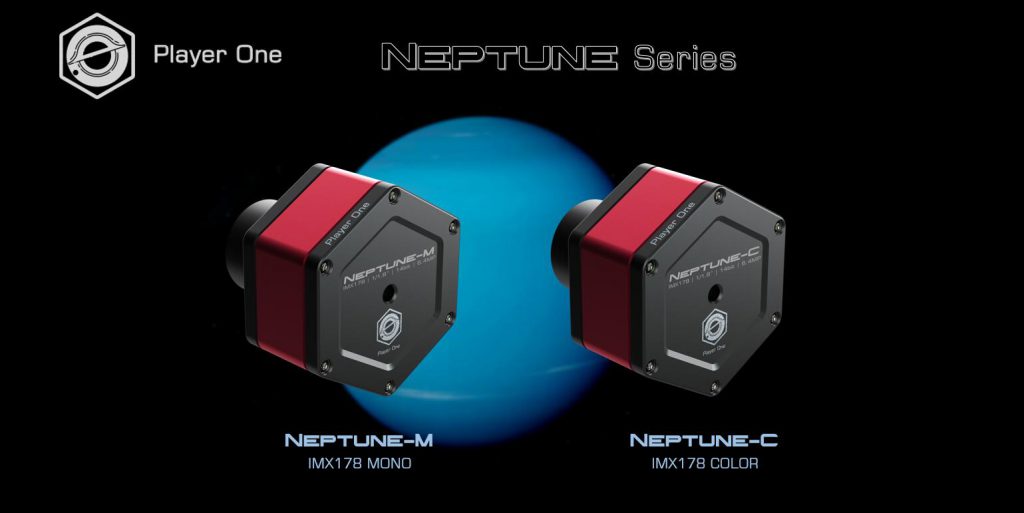
Neptune-M and Neptune-C, Based on IMX178 sensor, I believe you are familiar with it.
Maybe someone will ask, why make Neptune-M and C when you already have such a strong new camera Neptune-C II?
Reason 1, we need a monochrome camera.
IMX464 sensor is a color sensor, for many enthusiasts, without monochrome camera, a lot of shooting flexibility will be vanished, so Neptune-M is to make up for this.
Reason 2, we need true color.
Because Neptune-C (IMX178 color sensor) does not need to highlight its infrared sensitivity (compared with the IMX464 infrared sensitivity, the point of the IMX178 is very low). So, we put an UV IR-cut protective glass in Neptune-C, return you a pure true color world.
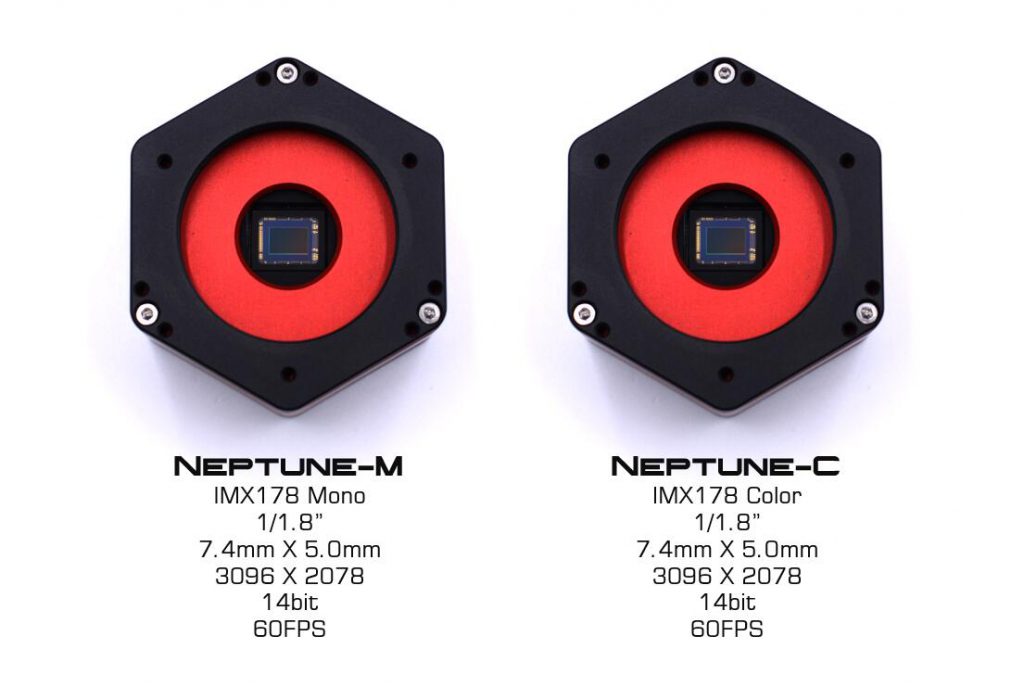
These two models complete our Neptune series, I believe that there will always be one suitable for you.
At last, let’s open the price that everyone cares about most:
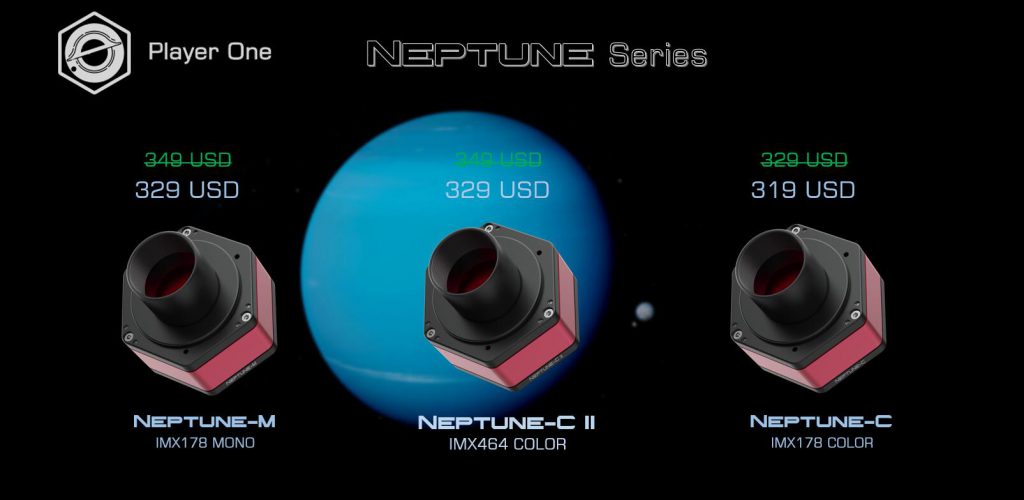
(In different countries, due to the different tax rates, please ask local dealers to get the final price.)
-白底-small100-200x78.jpg)
I have a question:
Why don’t u set the correct focal plane for each planetary camera before to the users? If do so, no need to adjust the tilt plate by ourselves!
focal plane is set correctly, but for solar Ha imaging, it need tilt a little to reduce newton ring. For lunar and planetary imaging, never need to adjust it.
Have had the Player One Neptune for Ha solar astrophotography since it was first introduced. Wow….what a great camera. The on board DDR and tilting focal plane for solar imaging (to fihgt Newton rings) is a game changer. It also can do double duty as an excellent autoguide camera since it has the correct port. It runs cool and haven’t found any things that I could fault it for….even the price is great.
Thank you so much for sharing your experiences about this camera. Your affirmation is the motivation that we continue to work hard on astronomical cameras.
Hello,
I left a few days ago comment about the Neptune CII caméra I bought. The caméra fullfill all my needs, but I need to know the bayer patern of it for post edition purpose. Could you give me an answer about that
Thanks in avance.
Best regards
Mr Héraud
Hi Herand,
Thank you for send us a message. Neptune-C II camera, bayer pattern is RGGB. all Sony sensors use RGGB as their bayer pattern 🙂